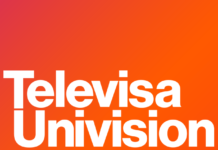
(By Bob McCurdy) I’ll keep this short and sweet. Some thoughts regarding radio attribution analytics…
There are 107 billion reasons. This is the ad revenue allocated to digital in 2018. That’s about 7x total radio revenue spend. Advertisers, whether we like it or not, or agree or not, want some kind of assurance that their media spend had some kind of impact. While not providing any kind of assurance, we’ve watched industry revenues decline year after year.
What’s the definition of insanity? It’s long past time to do and try something different, with the understanding that very few, if any, sets of data are perfect. But in the hands of professionals, valuable insights can still be extracted from them.
How many times have we heard something like, “No one listens to radio commercials”? Attribution analytics enables us to provide some assurance that they do. We surely haven’t done a good job as an industry explaining the positive impact of implicit and passive listening.
Have a problem with the current attribution analytics methodology? Try finding one that quantifies brand health/growth. Better yet, try affording it and then even providing the data in the same year.
The majority of radio advertising contains call-to-action messaging and that’s where attribution analytics comes in handy. Radio is not viewed as a branding medium by most national advertisers. Is this thinking flawed? Likely. So let’s work together to develop some kind of cost-effective, replicable methodology to address this perception and have it build upon the attribution analytics data we currently have. It would be a research tandem that would enable radio to generate more revenue.
The days of approaching sophisticated advertisers with anecdotal evidence and not empirical data are long gone.
We recognize that not all advertisers have an interest in quantifying web visitation, that it’s not one of their KPI’s. That’s ok. We take the conversation in a different direction. Analytics data is not forced on advertisers.
Econometric companies talk about “direct” impact and “indirect” impact when quantifying the total impact of any media channel. With attribution analytics we also discuss “direct” (8-minute window web lift) and “indirect” impact (those who search after the 8-minute window). We quantify and roll up both “direct” and “indirect” impact by highlighting the web traffic lift on those days when radio commercials aired and those days when they didn’t.
It’s not like digital metrics are flawless. In mobile marketing, ad channels are free to claim a click on an ad without informing attribution partners of a prior impression. This creates a real issue where many cases of fraudulent clicks are delivered which could easily be validated with impression data attached. Bots/IVT, etc. are not perfect, but digital is still growing 20%-30% annually. Looks pretty attractive.
There’s more digital ad fraud in this country than there is total radio ad spend. The MRC approved counting a display ad as “delivered” if 50% of it is visible for one second. For video it is 50% of it visible for two seconds. And we have an issue with radio analytic attribution?
Nielsen. Love their metrics and use them every day. Their radio ratings have been our currency for decades. Ever do the math regarding the standard deviation surrounding them? If not, take the time to do it. Not even a census will provide you with accurate radio listening data. Look at all of the problems we’re having executing an accurate census.
Just because we now can measure the lower funnel impacts of radio (web visitation) doesn’t mean we sell and position radio as solely a lower funnel medium. We still discuss, position, and sell the upper funnel impact in terms of awareness, consideration, etc.
If we have a choice between being blind and intuitive or informed and somewhat enlightened via analytics attribution, I’ll choose the latter. Some kind of proof of success leads to confidence to invest. And while the data is only directionally correct, at least it provides some kind of direction.
We look forward to the analytics companies building upon their attribution offerings via foot traffic quantification and other attribution advancements.
There is no going back.
Bob McCurdy is Vice President of Sales for the Beasley Media Group and can be reached at [email protected].






This discussion is, technically, above my pay grade and outside my experience.
So, I am obliged to refer to an old-school anecdote.
Since before I had hair on my legs and was working part time at my local station, I was told by grizzled and willy, veteran AE’s about the two things that justify a radio buy: Advertisers’ increasing traffic and advertisers’ cash registers ringing more often than before the buy.
Given radio’s percentage of ad revenues being collected, maybe the justifications are not as available as at other times.
I’ve used a Radio attribution platform before, and to be honest, it just backfired on me. The only client I connected to it realized our stations were taking way more credit than we deserved. It almost tainted my long time client and I’s relationship. In desperate times, I can’t afford to use something that could have a negative effect on my book of business. Not going that route again!
How can valuable insights be extracted from data that is being quantified wrong in the first place? Perception is reality isn’t it! Let’s lie to our clients, make them believe our medium is delivering visits to their site using a false methodology and feel great about it. Desperate times calls for desperate measures I guess. As a long time AE in Radio, if I have to choose between nothing or this, I will choose nothing. It would just hurt my sales in the long run if I choose to bring my clients something that looks and sounds like BS.
Unfortunately this is the same flawed thinking that got us into the Nielsen issues radio faces today. Something is better than nothing. It is not. Why should the radio industry settle for a product that is severely flawed, but it is all that is available. In the end you do more damage than good. You teach people that the wrong method is the best method. Thus you educate a whole generation of buyers to purchase based on the wrong criteria. Undoing that is next to impossible. You have to change the whole paradigm. Yes, I completely agree that the time to do nothing is passed. We need to do something, however in the rush for content, we have created our own fake news. Where did 8 minutes come from? Almost no one responds to an email in that time frame let alone respond to an ad. It just doesn’t work that way anymore. We respond when we are ready to respond. I am all for the data and a big believer in its time has come, but let’s do it right. Let’s do it accurately. Something is not better than nothing. If I make brownies, and in so doing, go out in my backyard and pick up a tiny sliver of dog poop to include in the recipe, are you eating the brownies? Me either.